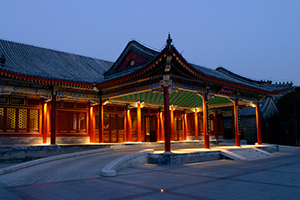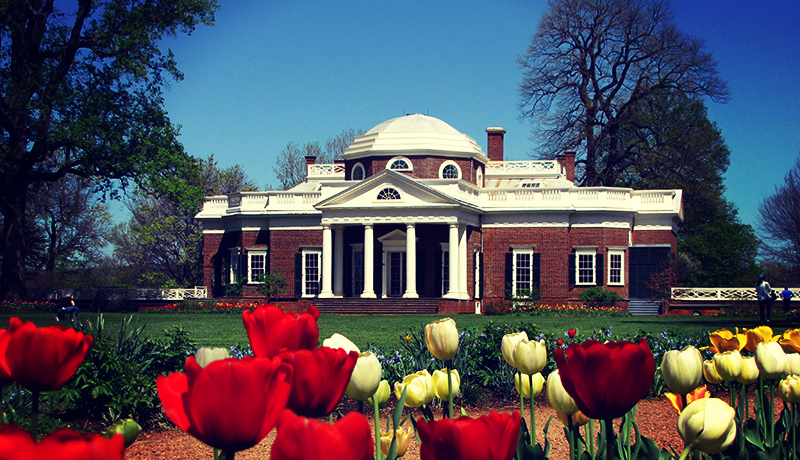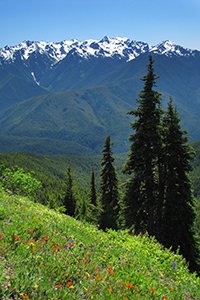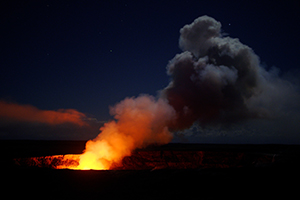

Thomas Jefferson’s Monticello
Photo Courtesy of Atish Dipankar
Around the globe, there are 1,031 UNESCO World Heritage Sites. Just getting to them is part of the allure. Once you arrive, though, another realm of adventure opens up as you figure out exactly what to do at the site and where to rest your head once you’re done exploring. Thankfully, as we’ve discovered, many of the planet’s magical cultural treasures have stunning hospitality gems in very close proximity.
UNESCO World Heritage Site: The Summer Palace, Beijing
Of China’s 48 World Heritage Sites, seven are in Beijing — a portion of the Great Wall of China, the Forbidden City, part of the Grand Canal, the Summer Palace, the Peking Man Site at Zhoukoudian, Temple of Heaven and the Ming Tombs. The Summer Palace, which dates from 1764, is the largest imperial garden in China and is among the world’s most well-preserved.
What to Do
Though it’s well accessible by the metro, the Summer Palace is a world away from central Beijing. You can easily spend half a day here, particularly in warmer weather, when you can take a lovely short boat ride on Kunming Lake. The Summer Palace is not gilded like Versailles but is no less impressive. The 2,388-foot Long Corridor has a richly decorated ceiling made up of 14,000 paintings. It’s well worth visiting the court area, near the East palace gate, where Dowager Empress Cixi and Emperor Guangxu lived and held court and where there are now a number of exhibits. For a view over the gardens, climb the 197-foot Longevity Hill.
Where to Stay
A dozen steps from the Summer Palace’s east gate is Forbes Travel Guide Four-Star property Aman at Summer Palace. Guest rooms are housed in ornate, century-old pavilions, much like those at the Summer Palace itself. The hotel is as luxurious as the Summer Palace once was. Rooms face a courtyard with walking paths and verdant gardens and are fashioned with Ming Dynasty-style wardrobes, carved wooden screens and bamboo blinds.

Olympic National Park’s Peerless Peaks, Photo Courtesy of John Gussma
UNESCO World Heritage Site: Olympic National Park, Port Angeles, Washington
The diversity of the park’s ecosystems is staggering, ranging from ice-capped mountains to flower-dotted meadows. Its old growth forest is considered to be the Pacific Northwest’s best example of an intact and protected temperate rainforest. There are 11 major river systems here and over 70 miles of coastline, home to a variety of indigenous plant and animal species.
What to Do
There’s practically no limit to what you can do in Olympic National Park. Hiking, climbing, fishing, boating and, in winter, skiing and snowshoeing. The park also runs programs led by rangers, such as visits to tidepools, wildlife viewing walks and night-sky viewing.
Where to Stay
Just under three hours from the park is the Grand Hyatt Seattle, which has one of the best locations in the city. Though you’ll need a car to get to Olympic National Park, the hotel is within walking distance of Pike Place Market, the waterfront, and the aquarium. (It’s also a block from the convention center, in case you’re in town for work rather than relaxation). At 425 rooms, the downtown structure is quite large, but service is so spot-on, you’ll barely notice the other guests.
UNESCO World Heritage Site: Historic District of Old Québec, Québec
Founded in the early 17th century by French explorer Samuel de Champlain, Québec is the only Canadian province where French is the official language. Its capital, Québec City, is the only city in North America to have preserved its ramparts and it remains a superb example of a fortified colonial city.
What to Do
With narrow cobblestone streets lined by historic stone buildings with mansard roofs and quaint restaurants, cafés and boutiques, the Historic District of Old Québec is charmingly European. Two churches of note, both Roman Catholic, are the Cathedral-Basilica of Notre-Dame de Québec — which dates to 1647, though has twice been destroyed — and the small Notre-Dame-des-Victoires, that opened in 1723. To move between Old Québec’s Upper Town and Lower Town, hop the 136-year-old funicular, which is great fun for kids.
Where to Stay
Right in the middle of Quebec City’s Old Port is Auberge Saint-Antoine, a grand hotel that’s a mere eight minutes by car and 17 minutes by train from the center of the Old City. The Forbes Travel Guide Recommended hotel seamlessly blends Old World and New by having rooms with no-fog mirrors and flat-screen TVs but also having public spaces with display cases of 17th-century shoes, coins and even cannonballs. The hotel is a particularly nice place to stay in winter, when the fireplaces are roaring.
UNESCO World Heritage Site: Pitons Management Area, near Soufrière, St. Lucia
Rising from the Caribbean Sea, the two Pitons (“peak” in French) are mountainous volcanic plugs, structures formed when magma hardens within a vent on an active volcano. St. Lucia‘s pair — the Gros Piton at 2,619 feet and the Petit Piton at 2,457 feet — are linked by the a ridge, and both can be climbed. Volcanic forms are often thought of as being rock-like, but The Pitons are shockingly green. Nearly 150 plant species and 27 bird species live on Gros Piton alone.
What to Do
Though it’s smaller in stature, the Petit Piton is the more difficult of the two to climb. Unless you’re a seasoned adventurist, Gros Piton is a much better bet. The park service runs regular guided climbs up the peak, with hikes taking roughly two hours to reach the summit. Your reward is a sweeping view of the water, the Petit Piton and other nearby islands.
Where to Stay
Four-Star Ladera Resort Saint Lucia is in Soufrière, just a 10-minute drive from Gros Piton, but the 37-suite resort is 1,100 feet above the Caribbean Sea so it gives guests phenomenal looks at the Pitons. It’s a popular hotel with honeymooners, who soak languidly in the private pool attached to each suite and gaze out at the view. Ladera can proudly boast that its furnishings are truly unique, as pieces were hand made by property manager Eustace Augustin and his team. After climbing Gros Piton, stretch out in the mineral baths at Diamond Falls or go to Sulphur Springs for a mud bath.

Hawaii Erupts With Color, Photo Courtesy of Keith Burnett
UNESCO World Heritage Site: Hawaii Volcanoes National Park, Hawaii
This massive Hawaii park, which celebrates its 100th birthday in 2016, includes the summit of the 13,681-foot Mauna Loa, one of the Earth’s most active volcanoes. Within the park, you will experience different climates, from tropical rain forests to the arid Kaʻū Desert.
What to Do
Hiking is the most popular activity here, but you can also take a driving tour of crater rims, bike or join programs with the park’s rangers. Avid trekkers can lace up for day and for overnight hikes (you’ll need a permit for the latter). To better understand the history of the park before setting off, stop by the Thomas A. Jaggar Museum on Crater Rim Drive. Not only is the view from here spectacular, but the attraction also explains volcanology and elements of indigenous Hawaiian culture.
Where to Stay
A two-hour drive from the park is Four-Star Four Seasons Resort Lana’i. This spectacular property sits on a red-lava cliff within a marine reserve. Swimming, snorkeling, golfing and massages at the hotel’s Four-Star spa are all popular pastimes. If venturing around Hawaii Volcanoes National Park has gotten you excited for more outdoor adventure, join a group hike up Sweetheart Rock or stretch out during a sunset beach yoga session.
UNESCO World Heritage Site: Monticello and the University of Virginia, Charlottesville, Virginia
Author of the American Declaration of Independence and U.S. President Thomas Jefferson founded the University of Virginia in 1819. Jefferson also designed Monticello, his Charlottesville plantation residence, and Academical Village, which sits five miles away on the University of Virginia campus. Monticello, designed in Neoclassical and Palladian styles, sits on the summit of the 850-foot peak of the Southwest Mountains and takes its name from the Italian word for “mound.”
What to Do
There are a number of tours of Monticello, including ones that center around slavery and the gardens of the property. One-off and semi-regular events, such as a fall foliage walk or toddler play sessions, are also held. The University of Virginia is a hugely active campus that invites visitors to attend sporting events, performances and concerts.
Where to Stay
A short jaunt from Monticello, Four-Star Clifton Inn has its own historical cred. Jefferson’s son-in-law, Thomas Mann Randolph, Jr., designed the Federal- and Colonial Revival-style inn, with construction beginning in 1799. Today, the 17-room boutique hotel is an idyllic weekend escape where urbanites can stroll the 100-acre grounds, play lawn games or sit down to tea and Blue Ridge Mountain vistas.
UNESCO World Heritage Site: Banks of the Seine, Paris
The 482-mile waterway flows from Source-Seine, 19 miles northwest of Dijon through Paris and into the English Channel. The river is notable for the huge number of grand buildings and Paris landmarks that can be seen from its shores, including the Eiffel Tower.
What to Do
Stroll along the banks of the Seine and you’ll also spy the Louvre, Sainte-Chapelle and the Cathedral of Notre-Dame. Urban planner Baron Haussmann’s wide boulevards, lined around stately 19th- and 20th-century buildings, tell of the Seine’s enormous role in the laying out of Paris. When you tire of walking, hop on one of the tourist boats that ply the river.
Where to Stay
Hôtel Le Fouquet’s Paris, on the right bank, is a 15-minute hike from the Seine. Service is highly personalized; ahead of your stay, you’ll be asked to fill out a two-page questionnaire on your preferences to ensure of this. The hotel is in the 8th arrondissement on Champs-Élysées, a stone’s throw from the George V metro station and just across the water from the Eiffel Tower.
UNESCO World Heritage Site: San Miguel de Allende, Mexico
San Miguel de Allende has been recognized for its colonial authenticity and cultural significance since being established in the 16th century. Named after General Ignacio Allende, a prominent figure in Mexico’s War of Independence, this town is a melting pot of different cultures, artists, foreigners and locals.
What to Do
Visit the nearby Sanctuary of Atotonilco or stroll the town to see the well-preserved architecture, dine from the many street carts and gourmet restaurants and visit over 100 studios and galleries for arts of all sorts.
Where to Stay
Rosewood San Miguel de Allende is Mexico’s premier luxury boutique hotel, sitting right in the middle of the historic artists’ village. When you aren’t out seeing the sites, consider the hotel’s new Inspiration Art Amenity, a program that invites guests staying in select suites to discover their inner artists through painting kits waiting in their room.

